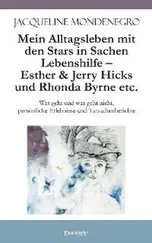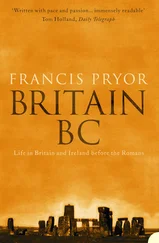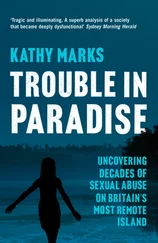Victorian Britain, eagerly building an empire, endorsed the idea that sleep was the potential enemy of industry. The bedroom, previously a domestic showpiece into which visitors would be invited, became a private retreat for the seven or eight hours of rest required to prepare for the morrow. The bed itself, once an opportunity for the wealthy to exhibit their status with magnificent drapes, luxurious feather-filled pillows and decorative frames, shrunk down to a modest and functional object. To this day, UK bed sizes reflect nineteenth-century attitudes. A standard double is an inch narrower than most European equivalents, and the width of a British king-size bed is a full fifteen inches less regal than its continental cousin. The bed was stripped of anything that could be regarded as indulgent: a practical solution to the inconvenient necessity of sleep.
The shift from a rural to urban lifestyle, coupled with a culture that imbued sleep with a moral dubiety, meant Britain found it increasingly difficult to nod off. Charles Dickens would observe the nocturnal fretfulness of city inhabitants as he wandered the streets of London suffering from his own insomnia. Dickens’ personal remedy was a bed that pointed northwards, in which he would sleep exactly in the middle, his arms outstretched and with each hand equidistant from the edge. More conventional Victorian insomnia cures included quantities of gin, laudanum (opium mixed with alcohol) and cannabis, prescribed for the Queen herself by the Royal Physician to assist sleep.
In 1894 the British Medical Journal worried at the nation’s sleeplessness.
The hurry and excitement of modern life is held to be responsible for much of the insomnia of which we hear; and most of the articles and letters full of good advice to live more quietly and of platitudes concerning the harmfulness or rush and worry. The pity of it is that so many people are unable to follow this good advice and are obliged to lead a life of anxiety and high tension.
As if to emphasise the point, the following year the Prime Minister, the Earl of Rosebery, resigned, blaming chronic insomnia as the main reason. ‘I cannot forget 1895,’ he would write later. ‘To lie, night after night, staring wide awake, hopeless of sleep, tormented in nerves… is an experience which no sane man with a conscience would repeat.’
It is often suggested that contemporary Britain is suffering a similar waking nightmare, that the rigours of our 24/7 culture have left us bleary-eyed victims of sleep deprivation. As on so many issues, newspapers are prone to argue that if only we were to return to the habits of the days of empire, when British adults spent a healthy nine hours a night between the sheets, all would be well. And as so often, it is nostalgia for a myth.
It turns out that the key piece of research, trotted out again and again as proof that our recent ancestors slept much more, was actually published in 1913 by two psychologists at Stanford University in California, Lewis Terman and Adeline Hocking. The clue to why their paper might not provide a complete picture of early twentieth-century sleeping habits is in its main title: ‘The Sleep of School Children’. Yes, this was a piece of work trying to find the optimum amount of shut-eye for kids. It measured the sleep of American 6-year-olds (average 11 hours 14 minutes) and college students (average 7 hours 47 minutes), figures that match up pretty closely with the amount of sleep children and young healthy adults get in Britain today.
The belief that we are a nation reeling from an increasing epidemic of sleep disorders is too widely held to be undermined by mere evidence. The results of a survey published by the Mental Health Foundation in 2010 were held up as further proof in the papers: ‘Sleep-deprived Britain: Two thirds of us suffer from debilitating insomnia’; ‘How worn-out Britain finally woke up to its chronic sleep problem’. The poll appeared to confirm the accepted wisdom that our twenty-first-century lifestyle was destroying our slumber. More than a cursory glance at the research, however, revealed that the headlines were nonsense.
‘Some caution should be used when discussing the results of this survey,’ the researchers themselves advised, adding that the sample ‘cannot be truly representative of the UK population’. The reason for extreme circumspection was that the poll had been conducted on the website of Sleepio, an online resource specifically aimed at people with sleep problems. ‘Take just five minutes to answer our survey and you’ll get a free tailored report on the state of your sleep,’ worried readers were informed. What seems surprising (given the likely users of the site) is not that two thirds of those who filled out Sleepio’s questionnaire thought they had a problem sleeping, but that a third did not!
The evidence that Britain’s sleep patterns are much worse than they were a century ago is thin. The bulk of research shows that, on average, UK adults get a healthy seven-and-a-half to eight hours a night. Middle-aged, middle-class professionals juggling stressful jobs and demanding children probably manage a bit less, and that, of course, is the demographic of the people who edit national newspapers.
There are plenty of people out to convince us we should feel guilty about not getting enough sleep, just as two centuries ago there were plenty of people out to convince Britain it should feel guilty about getting too much. Our relationship with slumber has been turned on its head.
When the economy was primarily agricultural and ruled by the sun, the rhythm of sleep was in simple time — two beats in the bar, up at dawn and down at dusk. Variation was orchestrated by the four seasons. As Robert Macnish explained, ‘some of the circumstances which induce us to sit up late and rise early in summer, are wanting during winter; and we consequently feel disposed to lie longer in bed during the latter season of the year.’
With the birth of the metropolis, the rhythm became more complex, a syncopated beat that drifted away from the natural tempo of the rising and setting sun. On 28 January 1807, the world’s first street lighting with gas was illuminated in London’s Pall Mall. Three years later, Humphry Davy demonstrated the first arc lamp to the Royal Institution, as British inventors competed to achieve the light bulb moment.
We can argue whether it was Scotsman James Lindsay’s electrical device demonstrated to a public meeting in Dundee in 1835 that constituted the first incandescent light bulb, or if Sunderland inventor Joseph Swan should get the credit for developing the first successful ‘filament electric lamp’ publicly demonstrated on Tyneside in 1878. History books will tell you it was American Thomas Edison who patented the first practical and commercial design in 1879, but most overlook the fact that the world’s first light bulb factory was established by Swan at Benwell in Newcastle. In the late nineteenth century, it was Britain that was doing its best to disrupt the sleep patterns of the world.
The United States, however, can legitimately claim to have invented ‘24-hour convenience’, an oxymoronic concept which would soon cross the Atlantic to meddle with British body clocks. Its origins can be traced to Austin, Texas in the autumn of 1962, when the local college football team, the Longhorns, was having a successful season. One Saturday night after the game, a 7-Eleven store nearby found itself so busy with jubilant young fans that it never closed. The manager spotted a gap in the market and began opening the shop twenty-four hours a day, an idea that quickly spread to other outlets in Dallas, Fort Worth and Las Vegas, before sweeping the planet.
Defying the conventions of sleep became part of the youth revolution of the 1960s. Californian teenager Randy Gardner made the point by staying awake for eleven days in 1964, the longest anyone has been recorded going without sleep. ‘Mind over matter,’ he told reporters as he shrugged off to bed. In Britain the same year, the Beatles sang of ‘working like a dog’ when they should have been ‘sleeping like a log’ — ‘A Hard Day’s Night’ was the flip side of rocking around the clock.
Читать дальше












